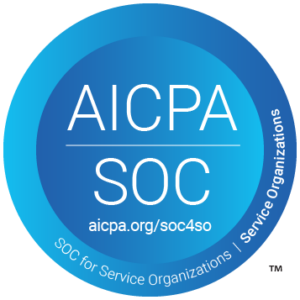Student services teams across Higher Education are always looking to improve the college experience. As technology continues to evolve at a breakneck pace, it can help them reach students on a deeper level. However, pairing strategic initiatives with emerging technology isn’t always a smooth process for institutions – particularly when staff views new tools through the lens of old frameworks.
That’s the situation with Artificial Intelligence (AI) today. When colleges and universities evaluate AI-driven chatbots the same way they would marketing software, CRMs, or a learning management system, they can fail to tap into this technology’s strengths and may fall short of achieving the results AI is capable of driving.
AdmitHub partners with institutions of all sizes to help them leverage AI to its full potential. We focus on building chatbots that foster proactive and conversational student support while enhancing staff efficiency and impact. Here are three universal best practices that all higher ed institutions should keep in mind when implementing a chatbot:
Best Practice #1: Have an Onboarding Plan and Team
Most software works the same on the first day of implementation as it does weeks, months, and even years later. AI chatbots are different – they become smarter and more effective over time, like a new employee. Having a thorough onboarding plan where the bot can promptly begin learning from the students it’s designed to support is key.
During implementation, set aside time to form the right team of stakeholders responsible for the initial training. This ensures you build a strong foundation of cross-departmental knowledge. Your chatbot will need a lot of support within this first phase of implementation, but the initial investment will pay off in the long run. The right foundation will help the bot learn quicker and require less attention over time.
In this early stage of training, don’t expect perfection. View this process as an opportunity to improve all communication with students, not just via the chatbot. Some universities find that the pain points in their bots’ response capabilities are symptomatic of larger communication gaps, such as key student registration information missing from their website. If their bots hadn’t escalated these registration questions, those institutions may have never pinpointed larger issues.
By setting aside enough time for intentional training, you and your chatbot will be better equipped to provide students with the consistent, high-quality support they deserve. A strong foundation will enhance your bot’s ability to carefully listen at scale, which separates its functionality from other platforms and helps to ensure you are delivering specific, timely, and relevant information to each and every student.
Best Practice #2: Involve Students Early and Launch Quickly
The best way for your chatbot to learn is to engage with students as much as possible—and as soon as possible. It is impossible to anticipate all of the questions your students will ask the bot, so the most effective way to generate a list of FAQs is to simply let students start interacting with the bot. Since AI chatbots learn and grow through questions, more exposure to a variety of student needs will yield more effective support.
After drafting your initial list of FAQs, staff should review answers for accuracy and appropriate, conversational tone. Students should also have a say in the review process to ensure the bot is speaking their language and communicating in a clear, friendly way.
With the right onboarding process, your chatbot will do more than simply answer questions – it will respond with personality. Instead of being limited to stiff, mechanical responses, it can adopt the tone of a helpful member of your student services team, a friendly upperclassman, or even your institution’s mascot. It can learn the language of your institution’s student body and reflect your attitudes and values in their words.
This type of “organic” training helps ensure that students who engage with your bot get the helpful information they need as well as an enjoyable, personalized experience – which will encourage higher engagement moving forward.
Best Practice #3: Implement Your Bot in Stages
You don’t hire a new employee and expect them to be up to full speed in a month. The same is true for a bot: think of onboarding as a series of growth phases where the bot gradually gains exposure to different student needs. Across these phases your bot will get smarter, your staff will become more comfortable with the technology, and your students will be more patient and forgiving as they learn how to get the right answers.
Start with a subset of your total student population for the initial launch phase. When the Bot succeeds in targeting its support for this focused population, gradually introduce the bot to new audiences. This staged usage and gradual improvement will make each subsequent phase easier to manage and more effective than the one before.
Remember to include nudge campaigns within the different stages of implementation. Proactive messages – such as reminding students to complete their FAFSA verification or apply for housing before the deadline – have been proven to increase the percentage of students who complete these essential tasks. You can even use your bot to strengthen the campaigns you’re sending out through traditional channels such as email or phone calls. By doing so, you can save your staff a considerable amount of time and significantly increase open rates. Students aren’t just more likely to receive the message when it’s texted from a chatbot. They’re also more likely to engage further as they can follow up with additional questions to get immediate answers on related (or even unrelated) topics.
To ensure a successful implementation, make sure you have the right project manager on your staff who can identify when your bot is ready to move towards the next milestone and be introduced to a new student group. The ideal project manager will be someone excited by new technology, who is also comfortable with the more conversational communication style students prefer. They should be empowered to pull in other staff and student resources at crucial moments in the bot’s development.
By taking this stage-by-stage approach to implementation, you’ll be able to launch your bot sooner and get better results.
Developing a Targeted Support Model
Colleges and universities across Higher Education are facing a daunting challenge: today’s students expect instant and personalized responses to every question, at all times of the day (and night). Artificial intelligence has enabled institutions to deliver on their promise to support students on-demand and around the clock. With the right AI-powered bot, there is an opportunity to provide a new level of personalization in student services without needing to increase your team’s workload, headcount, or overall budget.
Better support, higher productivity, and lower costs. By following the best practices outlined above, and working with a technology partner who will support you at every step, you can achieve all three of these goals simultaneously.
To start making these goals a reality, contact the experts at AdmitHub today.

